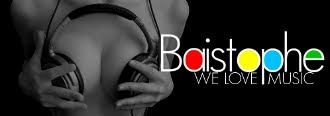 PAUL MORAVEC
PAUL MORAVEC
Paul Moravec was born in Buffalo, New York and subsequently attended the Lawrenceville School. He received his B.A. in composition from Harvard University in 1980; while there, he performed with the Holden Choirs. He won the Prix de Rome and studied at the American Academy in Rome after graduating. He then received the Master of Music (1982) and Doctor of Musical Arts (1987) in composition, both from Columbia University.
Moravec has taught at Dartmouth College (1987-96) and Hunter College (1997-98). He suffered from clinically-diagnosed depression that reached a zenith during the time immediately surrounding his departure from Dartmouth College, and underwent electroshock therapy. He is currently the chair of the music department at Adelphi University, and has contributed to what the New York Times has called a "renaissance" in a college that went through academic and financial difficulties in the 1990s.
In 2004, Moravec received the Pulitzer Prize for Music for his work Tempest Fantasy. This prestigious award raised Moravec's profile significantly, and he was appointed to several residencies. He was named the new honorary composer-member of the New York Composers Circle in September, 2006. He was also appointed the composer in residence for the 2007-2008 academic year at the Institute for Advanced Study in Princeton, New Jersey.
In addition to his Pulitzer Prize, Moravec has received a Composer Fellowship from the National Endowment for the Arts, a Rockefeller Foundation fellowship, and the Charles Ives and Goddard Lieberson Awards in American Composition.
He has been commissioned by such ensembles as the Dessoff Choirs, the Albany Symphony Orchestra, and the Harvard Glee Club.
 TEMPEST FANTASY (2004)
TEMPEST FANTASY (2004)
320 KBPS
From the evidence of the music on this disc, some of which brought its composer the 2004 Pulitzer Prize for Music, Paul Moravec has managed the neat trick of writing music that is conservative in style without affiliating itself with any specific style of the past. Although lyrical, it is too carefully controlled to be called Romantic in spirit. Except for the B.A.S.S. Variations on track 7, it largely avoids the referential tendencies of the neo-Classic school, and even in that work the sequence of textures grafted onto a basic variation structure is extraordinarily unexpected. It is not minimalist in the least but quite dense and demanding of the listener even as its basic language is accessible. Moravec's music is suffused with triads and with tunes based on triads, but there are a lot of each, placed into constantly evolving relationships and defining individual tonal realms in each work. The closest analogue from the past is the music of Ravel, who was also slippery when it came to categories; another comparison can be drawn to Brahms in the way the music invests craft and complexity into an essentially lyrical idiom. Moravec is demanding of performers in the same way as Ravel was, but the Trio Solisti, for whom these works were mostly written, is in tune with the challenges he sets. The technical opening Tempest Fantasy — the musical depiction of Shakespearean characters — is as familiar as can be, yet there is a freshness of spirit to each of its five movements. Among the four works on the album (originally released by Arabesque and now finding a good home as part of Naxos' American Classics series), Mood Swings, track 6, has received the most publicity. The title refers both to the work's stated aim of tracing the workings of the human nervous system (an unsupportable scientific conceit of a type that's still too common in contemporary composition) and to the swing rhythms that progressively develop over the course of the work. The illuminating booklet notes are by critic Terry Teachout, who has frequently praised Moravec's work, but the listener is apt to become absorbed in the music even without them.
Tempest Fantasy
1. Ariel
2. Prospero
3. Caliban
4. Sweet Airs
5. Fantasia
6. Mood Swings
7. B.A.S.S. Variations
8. Scherzo


THE TIME GALLERY (2006)
320 KBPS
Paul Moravec's The Time Gallery, scored for violin, piano, cello, flute, clarinet, and percussion, explores various aspects of time--or more accurately, our relationship to it through the use of various time-keeping devices. The first movement, Bells: The Devotional Hours, begins in a ringing panoply that easily could find a home in Mussorgsky's Boris Godunov. Multi-layered clock ticking introduces the following Time Machine, while a human heart sets the meter for the mercurial Pulse movement. The finale, Overtime: Memory Sings, superimposes chimes over ticking clocks, setting the stage for the mysterious and meditative music to come. This and the first movement form the slow bookends to the piece, while the inner movements feature a bracing energy and rhythmic vitality similar to that found in Shchedrin's Carmen Ballet. Moravec's own musical language is generally tonal--and although it's not consistently melodic, it's always accessible. More than that, it's highly engrossing, especially in this stimulating performance by the ensemble Eighth Blackbird.
Protean Fantasy and Ariel Fantasy present opposite poles of motion: serenely relaxed in the former and nervously swift in the latter. Whatever the pace, both works require imagination and impeccable musicianship, qualities that violinist Paul Sheppard-Skaerved and pianist Aaron Shorr provide aplenty. Naxos' recording captures it all in clear, vivid sound. Now this is a disc of new music most anyone can enjoy.
The Time Gallery
1. 1-Bells: Devotional Hours
2. 2-Time Machine
3. 3-Pulse: The Feeling Of What Happens
4. 4-Overtime: Memory Sings
5. Protean Fantasy
6. Ariel Fantasy

































